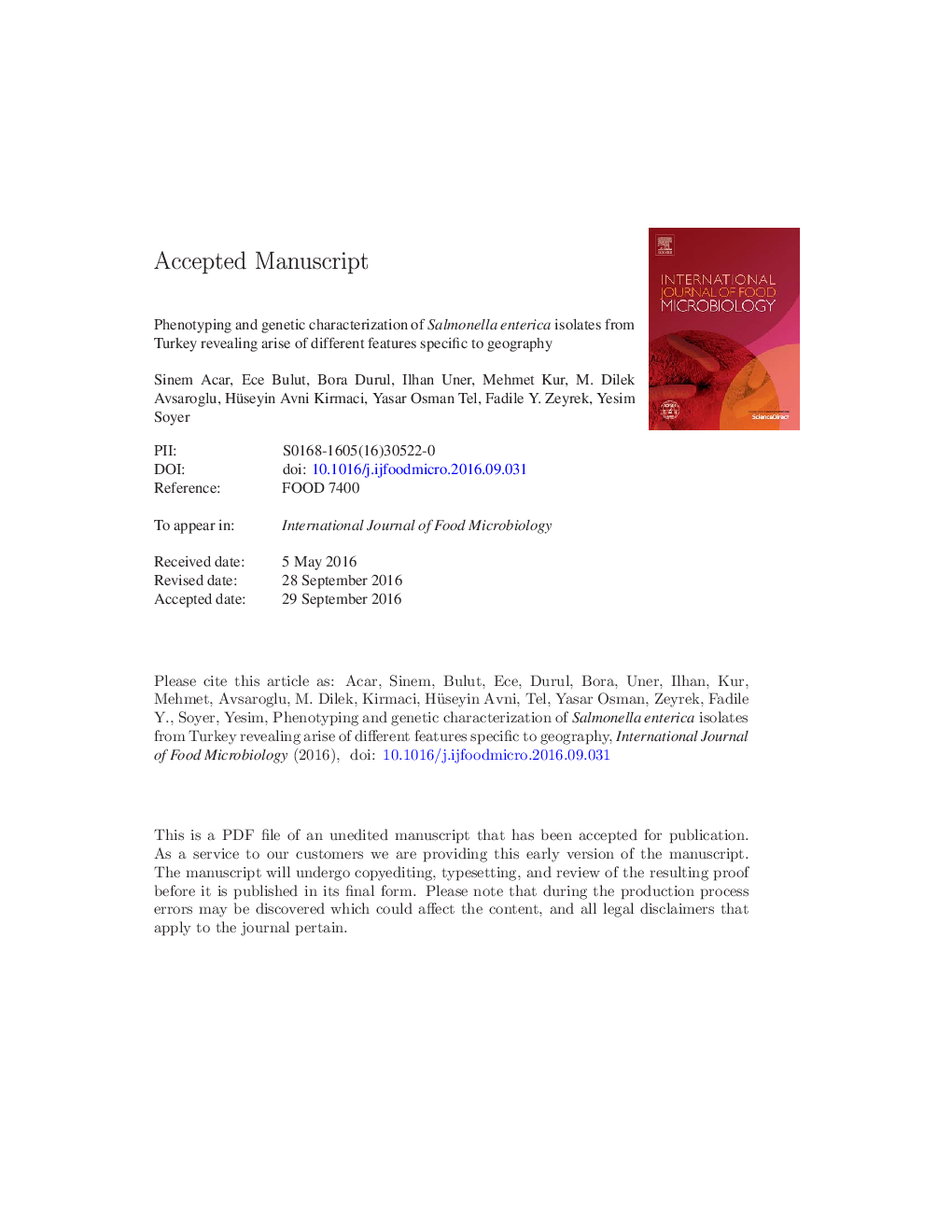| Article ID | Journal | Published Year | Pages | File Type |
|---|---|---|---|---|
| 6289650 | International Journal of Food Microbiology | 2017 | 24 Pages |
Abstract
192 Food samples (commonly consumed 8 food types), 355 animal samples (animal feces of bovine, ovine, goat and chicken) and 50 samples from clinical human cases in Sanliurfa city, Turkey in a year were collected to determine the Salmonella enterica subsp. enterica mosaic in Turkey. 161 Salmonella isolates represented 17 serotypes, 20 sequence types (STs) and 44 PFGE patterns (PTs). 3 serotypes, S. Enteritidis, S. Typhimurium and S. Kentucky, were recovered from three different hosts. The highest discriminatory power was obtained by PFGE (SIDÂ =Â 0.945), followed by MLST (SIDÂ =Â 0.902) and serotyping (SIDÂ =Â 0.885) for all isolates. The prevalence of antimicrobial resistance genes (aadA1, aadA2, strA, strB, aphA1-Iab, blaTEM-1, blaPSE-1, tetA) was highly correlated with phenotypic profiles of aminoglycoside, Ã-lactam and tetracycline groups (kappa >Â 0.85). From our knowledge, this is the first study reporting spatial and temporal distribution of Salmonella species through phenotypic and genetic approaches over farm to fork chain in Turkey. Thus, our data provided further information for evolution, ecology and transmission of Salmonella in Turkey.
Keywords
Related Topics
Life Sciences
Agricultural and Biological Sciences
Food Science
Authors
Sinem Acar, Ece Bulut, Bora Durul, Ilhan Uner, Mehmet Kur, M. Dilek Avsaroglu, Hüseyin Avni Kirmaci, Yasar Osman Tel, Fadile Y. Zeyrek, Yesim Soyer,
